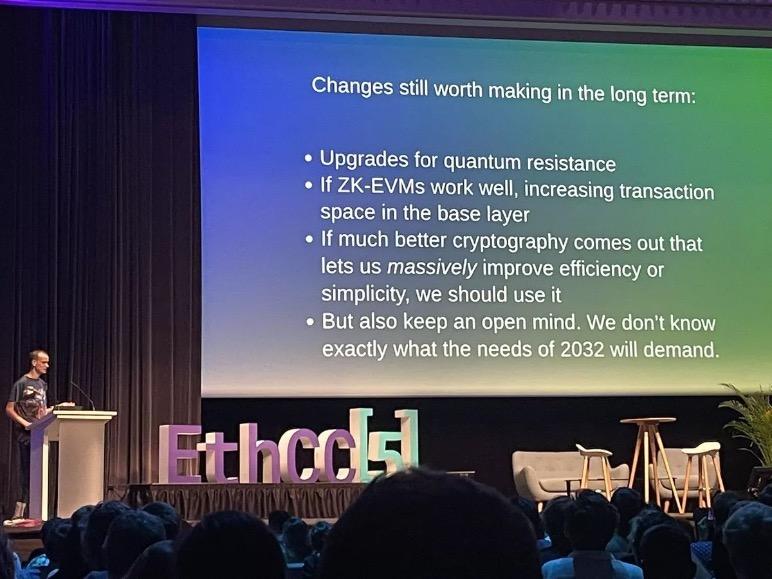Vitalik's speech summary at ETH CC: The Ethereum Merge is just the beginning, the next step will be the Surge
Written by: Shenchao TechFlow
Fashion icon Vitalik arrived in the fashion capital of Paris with his new handbag to attend ETH CC and give a speech.
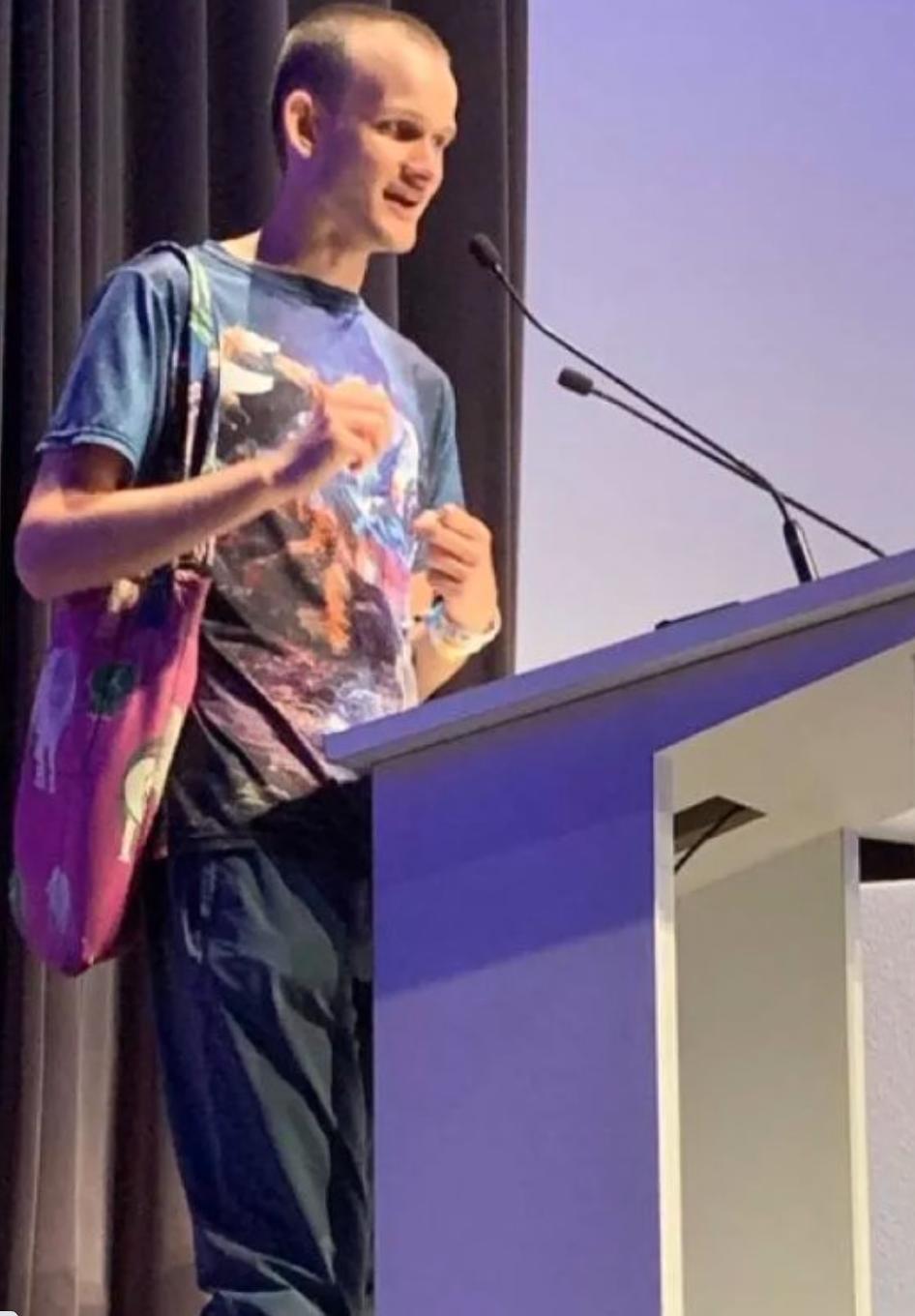
Vitalik stated that Bitcoin supporters believe Bitcoin is 80% complete, while Ethereum supporters believe Ethereum is only 40% complete. After the merge expected in September this year, Ethereum will still be only about 55% complete.
The Merge is just a small step on Ethereum's development path; there will be Surge, Verge, Purge, and Splurge afterwards. In short, Ethereum is still in its early stages, and the big moves have not yet been made.
Below is a summary of Vitalik's speech PPT, with images from Biconomy CTO:
The Merge is not the final destination for Ethereum; the development path is: Merge => Surge => Verge
Merge is about transitioning from POW to POS;
Surge is about introducing sharding;
Verge is about Verkle trees, which help optimize storage on Ethereum and reduce node size.
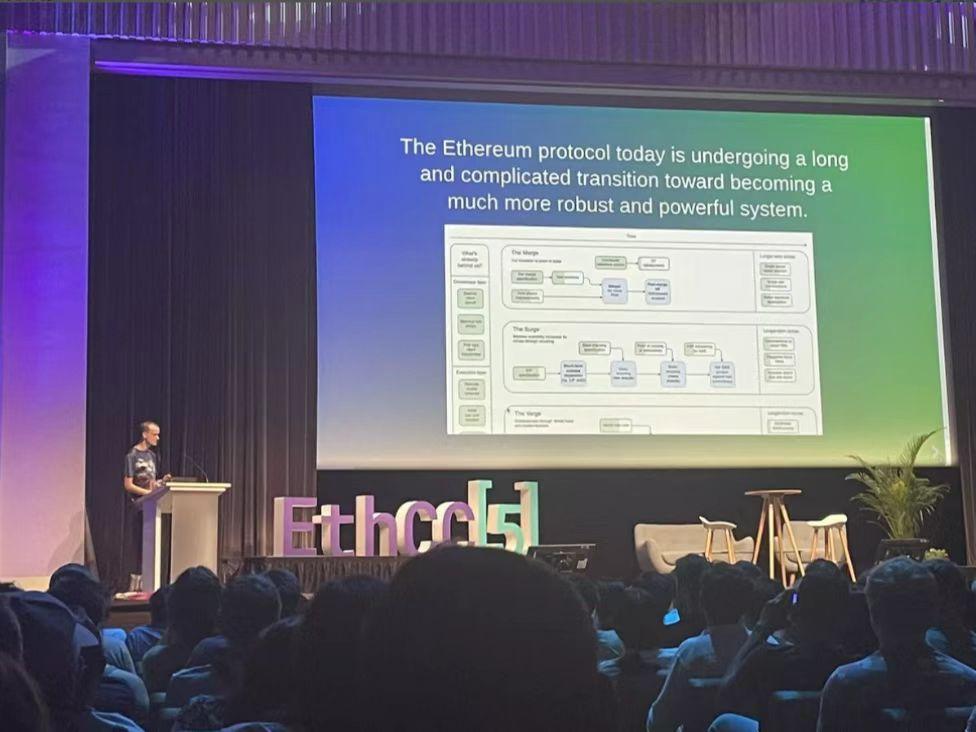
We are at a stage where Ethereum's capabilities are becoming stronger through rapid changes in the protocol.
But eventually, we will stop making rapid modifications to the protocol and use systems like L2 to add more features to the Ethereum ecosystem.
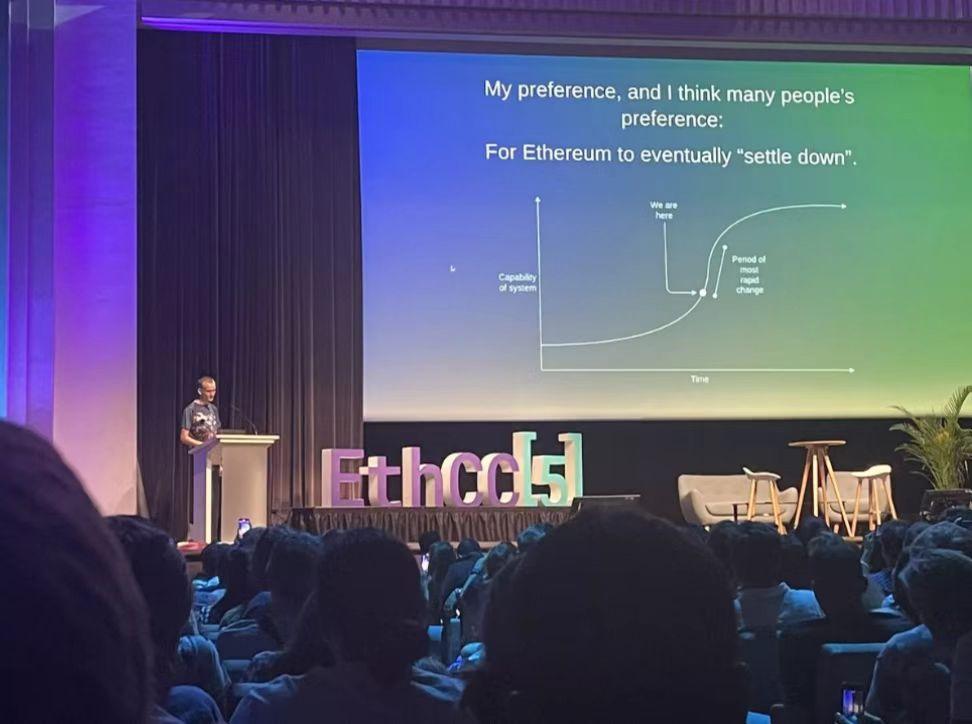
L1 is for security and reliability, while L2 is for rapid iteration and execution.
Escape Velocity Theory: Once L1 is strong enough, the rest can be handled by L2.
Developers need breaks, and new features take time to eliminate and reduce risks. (So, is this the reason for slow progress?)
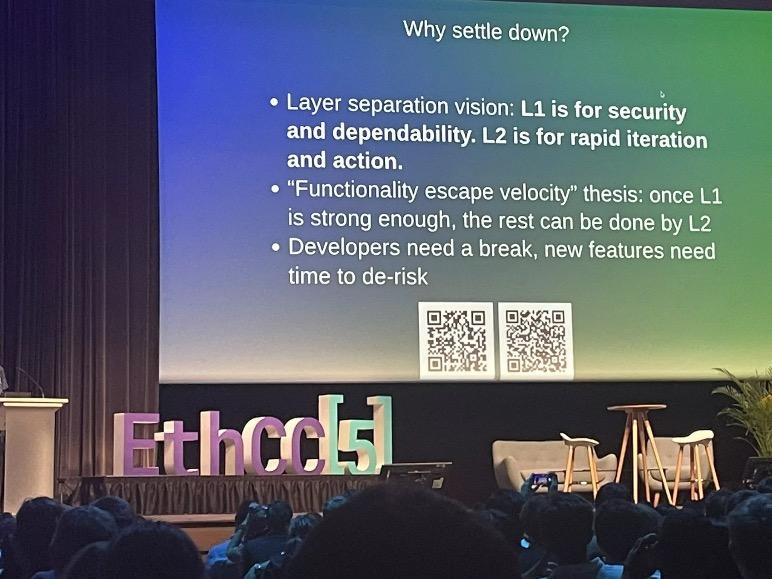
We need short-term pain for long-term gain.
Prohibit SELFSTRUCT.
EIP-4444: Clients must stop providing historical headers, bodies, and receipts older than one year at the p2p layer.
Switch to Verkle trees (storing more data in less space).
This may mean no backward compatibility.
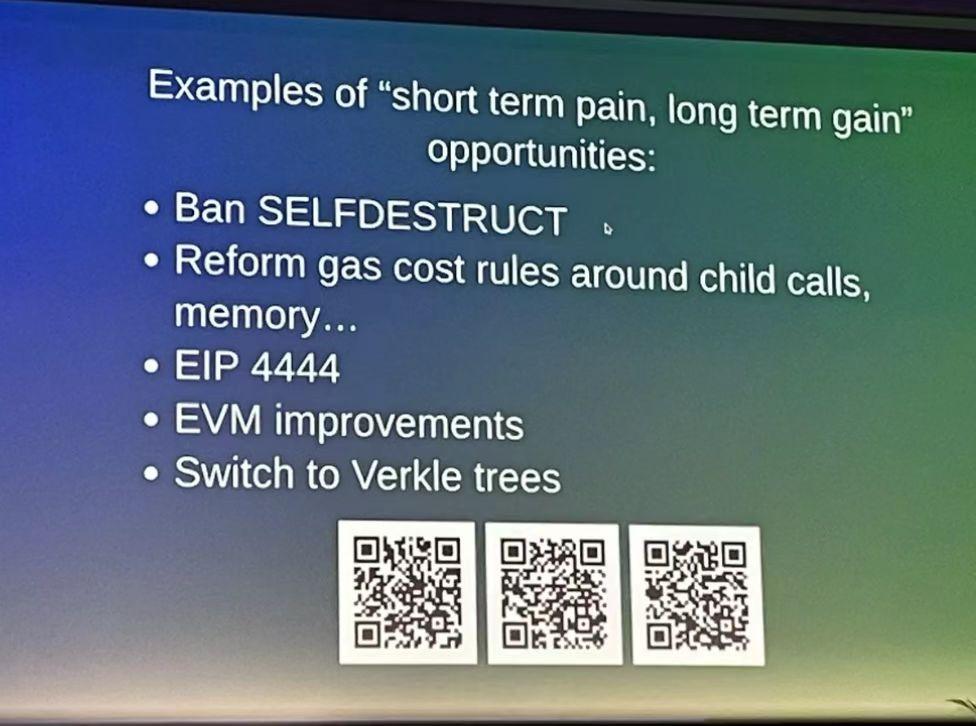
These are the things Vitalik is afraid to do:
Increase support for multiple virtual machines, increasing consensus complexity;
Address base layer SNARKS instead of waiting for better circuit designs;
Make Ethereum so complex that only developers can understand its design.
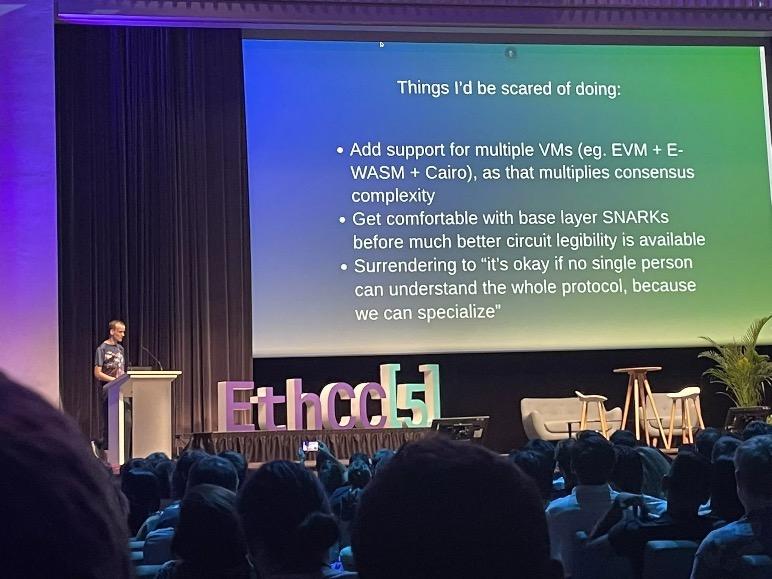
Where should the focus be?
Easy-to-use light clients, so anyone can run them;
Allow everyone to easily stake in Ethereum through smaller decentralized pools;
Run full nodes on lighter hardware.
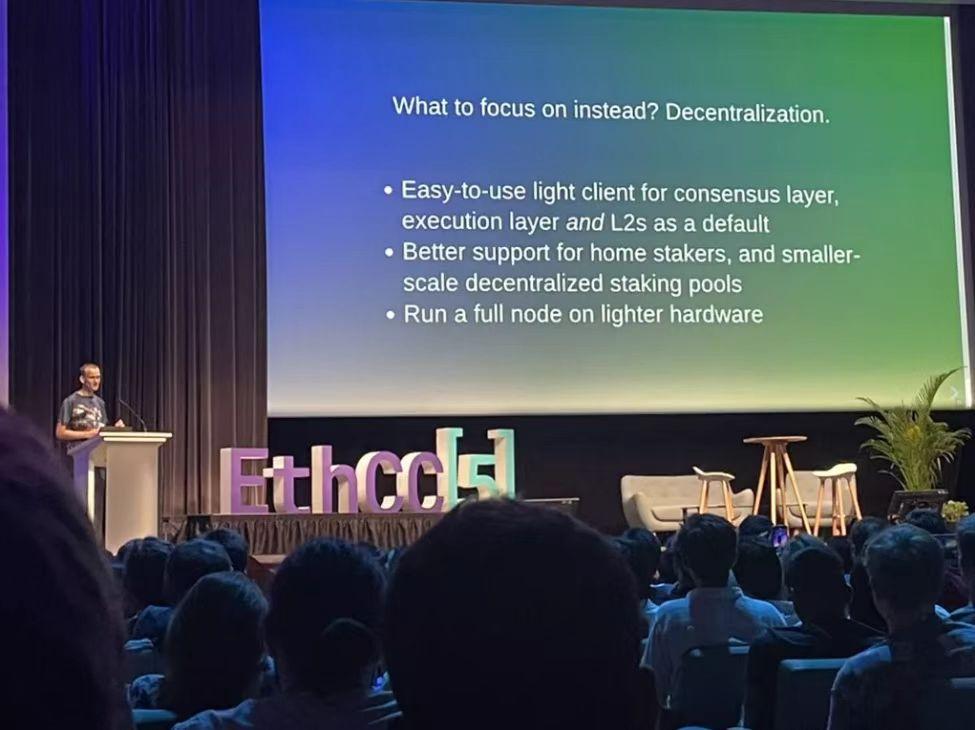
Long-term goals:
Make Ethereum quantum-resistant, so you can't casually run a quantum computer to generate someone else's private key;
If zkEVM works well, create txn space in the base layer to significantly reduce rolling costs;
Look for stronger cryptography;
Finally, keep an open mind!
